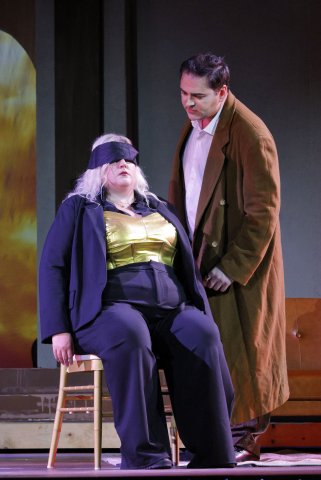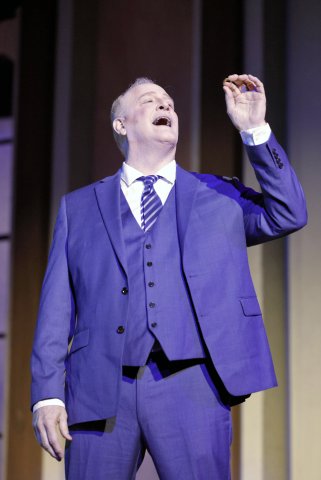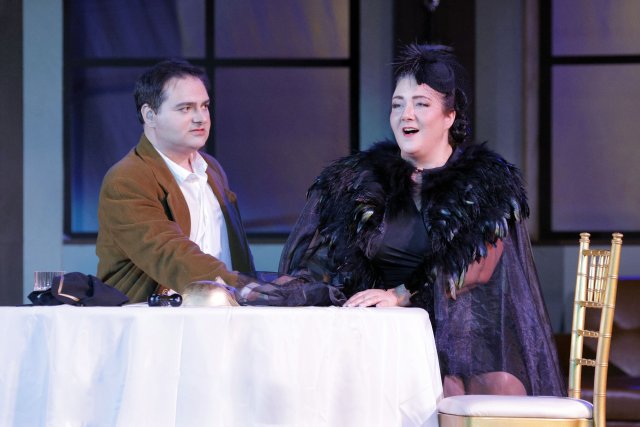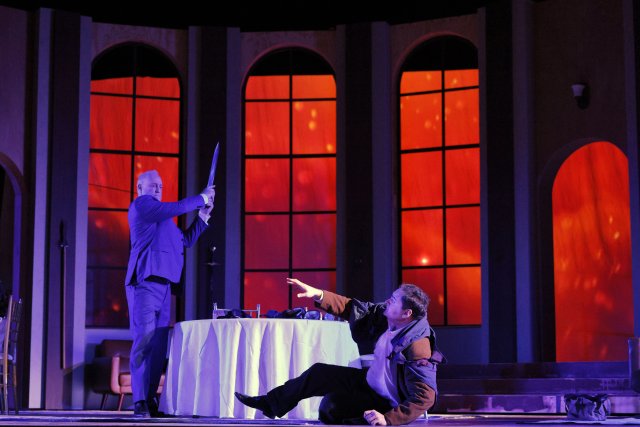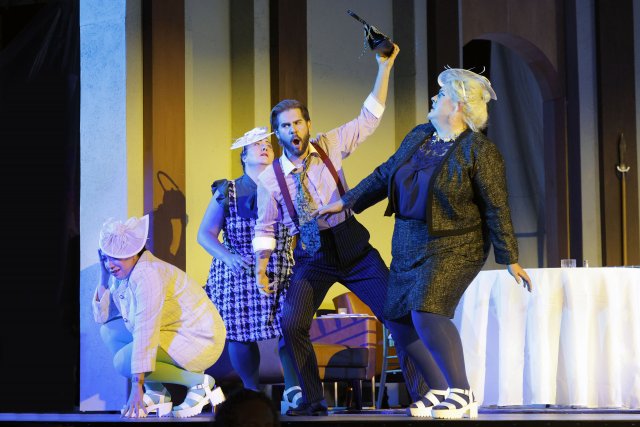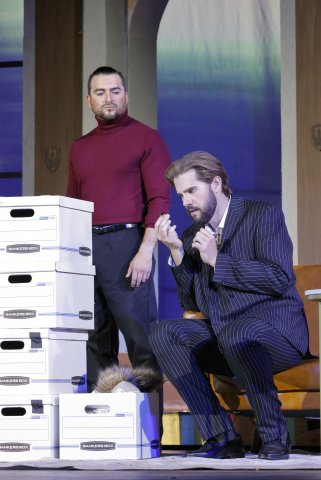Legend of the Ring
West Edge Opera Produces Wagner's Condensed Ring Cycle for a Third Time
By: Victor Cordell - Aug 06, 2024
No suite of operas designed as an integrated series can compete with Richard Wagner’s “Der Ring des Nibelungen” (“Wagner’s Ring Cycle”). Respected for its epic drama, endless continuous melody, and detailed leitmotifs, it constitutes a massive compendium of operatic treasure. But comprised of four music dramas, as the composer would call them, clocking over 15 hours of run time and usually seen in four nights, it also tests the patience of many opera goers and limits its audience and the number of companies that have the capacity to produce the whole cycle. As a result, its component operas are sometimes performed as one-off affairs.
In the year 2000, David Seaman developed a solution to satisfy those who want to refresh their past experience or taste the breadth of the four operas without having to consume the whole thing. He generated a Cliff Notes version that runs 3 ½ hours including intermission in one evening. This summary captures some of the musical highlights and follows the plotline through the full catalog.
West Edge Opera (and under its previous name, Berkeley Opera) is producing “Legend of the Ring” for the third time in 20 years, so the company clearly sees its value. In addition to drawing from the Ring’s deep well of powerful romantic music, the company adds an ensemble of performers whose vocal skills are exquisite across the board and a small but highly polished orchestra to make for a rewarding experience.
Of course, no distillation occurs without loss. With so much beautiful music, “Legend of the Ring” necessarily excludes much of it, including, for instance, perhaps the most memorable music from the Cycle, the full and thrilling “Ride of the Valkyries.” Nonetheless, despite the tens of cuts that are made from the score, the music of the “Legend” is seamless and engrossing.
What is understandably more problematic is the continuity of the libretto, as what is edited out almost certainly will contain information needed to understand the narrative completely. In one instance, a reference is made to the killing of a family for which there is no antecedent or explanation of motivation. A related problem is that singers perform multiple roles, and while there are generally changes of costumes, it is easy for the viewer to be confused among so much aural and visual stimulation.
The plotline involves many characters and endless convolutions, however, the central thrust concerns a ring forged from Rheingold, which gives the possessor the power to rule the world. After the gold is seized from the Rhine Maidens by the Nibelung dwarf Alberich, a curse, multiple deceptions, and clashes over the ring occur. Ultimately, Brünnhilde, daughter of the God of Gods, Wotan, who has ascended to Valhalla, returns it cleansed of the curse to the Rhine Maidens. As Wotan had said, the ring would result in the end of the Gods, and indeed, a fire destroys Valhalla. An interesting issue concerning these myths and his own embellishments to them is why Wagner became so obsessed with and committed to them for so many years when the morality of the characters is so flawed and prescriptive value is lacking.
Although the performance level was high throughout at the opening, three artists deserve special recognition – the three most important. The redoubtable Philip Skinner is Wotan, and his enormous and smooth bass-baritone voice could probably fill any performance hall in existence. Although Alex Boyer has excelled in many lyric tenor roles throughout the Bay Area, he demonstrates that he is equally capable in the demanding dramatic tenor role of Siegfried and Siegmund, commanding the edge and volume required. Finally, Tracy Cox is Brnnhilde, whose bright and brassy soprano flourishes in the role’s high range. One other performer of special interest is Peter Morgan, a bass-baritone with an interesting down-in-a-well voice. Alberich is a dwarf who is expected to be ugly, but Morgan, who portrays him, cuts a figure more akin to a matinee idol.
The Jonathan Khuner conducted orchestra of 15 pieces can’t produce the volume that Wagner specifies with up to 100 instruments. However, with a near equal mix of strings, winds, and brass, it produces a full, well-balanced, and disciplined sound that serves its purpose with great and deserved aplomb.
Modern staging replaces the vision of mythical lands associated with the Ring. While modernizing the costumery works, some viewers may find that the setting in a club or restaurant or whatever it is, with stock furnishings almost makes the production feel like a concert version. A more naturalistic outdoor setting, even relying on projections, would have kept more with the sense of the drama.
The choice to produce “Legend of the Ring” begs the question, why? One is to serve the audience of Wagner aficionados who get to see familiar music performed live and who know all of the characters and can fill in the plot gaps as currently presented.
But there are also the dilettantes and the newcomers who represent audience building opportunities. How could they be better served; gain further knowledge; enjoy it fully; and wish to come back for more? - through enhanced surtitles to better inform the patron. Two sorts are used in other contexts in movies and live performances. First is to flash a screen with each time or location. In this case, each opera could be identified in the transitions, which indicates a shift in action and some change in characters, particularly useful here since artists play multiple roles. Second is to project screens with information on what has transpired between scenes or off-stage that will help explain the flow of the complete plotline which has been diminished.
If I haven’t missed documenting any, I have seen 410 live operas including San Francisco Opera’s most recent Ring Cycle and this company’s 2010 production of “Legend of the Ring.” (yes, I keep records of them). What I don’t recall having seen in titles in any opera is an indication of which character is singing the lyrics, so it is by no means a unique West Edge issue. In arias, it is abundantly clear, but often not so in ensembles. It is particularly confusing in “Legend” for non-aficionados of the Ring, especially when characters aren’t clearly named when they take the stage or when an artist sings as many as five roles, which Mary Evelyn Hangley does here. One might think that there is a secret pact among opera companies to prevent sharing this information that might help many patrons fully understand what’s happening.
“Legend of the Ring,” with music and libretto by Richard Wagner from his operas “Das Rheingold,” “Die Walküre,” “Siegfried,” and “Götterdämerung,” is arranged by David Seaman, produced by West Edge Opera and plays at Oakland Scottish Rite Center, 1547 Lakeside Drive, Oakland, CA through August 17, 2024.

